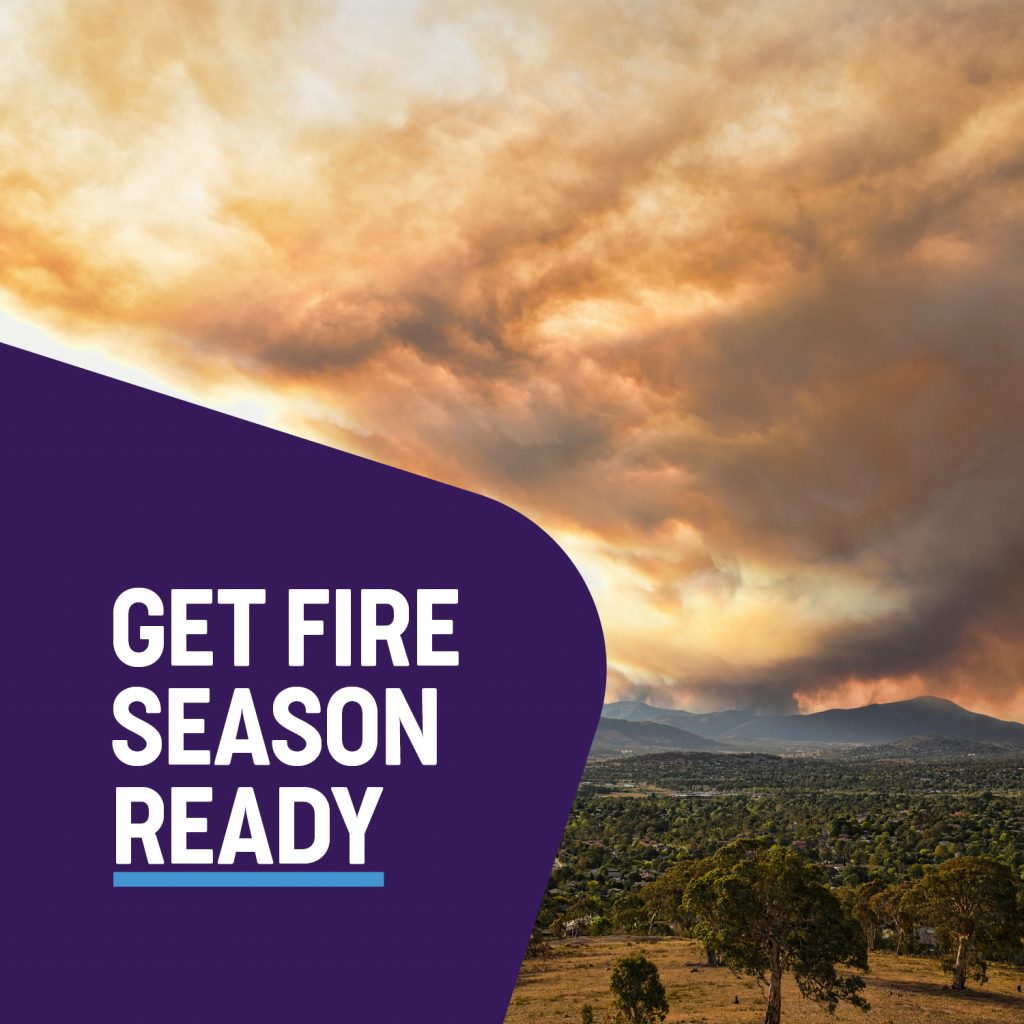
With the bushfire season officially starting, Asthma Australia is here to help people with asthma triggered by bushfire smoke to stay safe.
Book a call with an asthma educator
Twelve thousand of you told us in our 2019/20 Bushfire Smoke Impact Survey about the challenges and barriers you faced as you struggled to cope with asthma and other health impacts.
It is estimated that more than 400 people died prematurely from exposure to bushfire smoke during the 2019/2020 season and at least 1,300 people attended emergency departments with asthma. The health cost has been enormous, approximated at $1.95 billion according to a health economic study published recently.
The general advice for poor air quality days is to stay indoors with windows and doors closed and to turn the air conditioning to recirculate if you have it. Unfortunately, this isn’t always possible as not everyone has or can afford air conditioning, and people can’t stay cooped up indoors forever, so this advice did little to help in such severe circumstances.
To help you better prepare for the bushfire season, Asthma Australia has developed five ways to get asthma ready.
1. GET ASTHMA UNDER CONTROL
We know anyone can be impacted by poor air quality, however, if smoke is a known trigger for you or a loved one, it is recommended that you use a preventer during bushfire season or if you live near an area where hazard reduction burns are planned.
The risk of an asthma flare-up after exposure to smoke may be reduced by maintaining good asthma control. Find out more about your current asthma control by taking the Asthma Control Questionnaire.
See your GP or specialist for repeat scripts and ask your GP to work with you to develop your personalised Asthma Action Plan with clear instructions on what to do in case of exposure to smoke or worsening asthma. Seek emergency medical help if symptoms are severe.
2. GET INFORMATION
For the bushfire season, download the air quality monitoring app AirSmart and/or bookmark the Air Quality Index page from your state government department so you can check it easily.
Take time to understand the information and to identify the air quality reading at which you need to take protective action. You need to look out for the PM2.5 readings. For sensitive people including people with asthma, this could be levels that are considered Fair or Poor.
Download the AirSmart App
3. GET EQUIPPED
Ahead of the bushfire season, it is important to equip your home, your family, and yourself.
- Ensure you have a 30-day medication supply including prescribed preventers and relievers
- Purchase a supply of face masks suitable for poor air-quality (P2 or N95 mask). Fabric coverings/surgical masks used for COVID-19 are not suitable for filtering smoke particles. P2 or N95 masks shouldn’t be relied on for extended periods of time and you will still need to take other precautions. If you need to wear one for an extended period, you may need to replace the mask as the filter can get blocked
- Consider if you would need an air purifier. Although air purifiers are expensive, they can help reduce PM2.5 inside your home when used in an enclosed space (check manufacturer recommendations). Do your research on the various options – some air purifiers are more effective than others
- Check the windows and doors at home for gaps where air can leak in. Tape these gaps or repair them before a poor air-quality event
- Cover or close any indoor vents
4. GET TALKING
Ahead of a poor air quality event, it’s important that others are aware of how to keep you safe. Get talking with employers, schools and think ahead to transport options so you can manage day-to-day activities like school and work without worry or guilt.
- Speak to your employer about your asthma and poor air quality, and how they can support you. This could mean flexibility to work from home or perhaps alternate duties, should a poor air quality event prevent you from working outside or commuting
- For parents, make teachers aware of your child’s asthma and have a plan in place for poor air quality days to avoid exposure, including exercise. Talk to school principals about their air quality policies and plans
- Identify public buildings which may have better air filtering than your home if you need to seek a safe refuge
- Plan your transport. If you don’t have a car and need to travel to the shops or other places like work during poor air quality, what will you do? Make a plan that works for you ahead of time
5. GET SUPPORT
Don’t be afraid to ask for help. Identify your support networks and nominate someone as a key contact. This should be someone who you can go to if you need support during this time. It could be for emotional support, other help to enable you to stay indoors, or for an alternative place to stay.
If you need further support or are feeling uneasy about heading into the bushfire season, you can speak to an Asthma Educator on 1800 ASTHMA (1800 278 162).





 1800 278 462
1800 278 462



